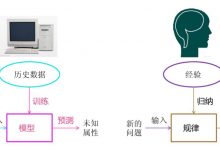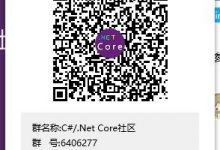人工智能药物设计
介绍 (Introduction)
Advances in the life sciences have brought about a transformative impact on healthcare, with life span and quality of life dramatically improving world-wide. Improvements in manufacturing now mean that the pharmaceutical sector has the capacity to produce vast quantities of effective drugs. However, this capacity brings about the task of distilling the vast amounts of data relating to pharmaceutical products into an accurate and understandable form, so that patients can use treatments effectively. Even common over the counter medicines such as paracetamol (a.k.a. acetaminophen) can cause serious health issues if the information relating to the indications, directions, dosage, side-effects and other advisory and safety information is not accurate.
生命科学的进步对医疗保健产生了革命性的影响,其寿命和生活质量在全世界范围内得到了极大改善。 现在,制造业的改善意味着制药业具有生产大量有效药物的能力。 但是,这种能力带来了将大量与药品有关的数据提炼成准确且易于理解的形式的任务,以便患者可以有效地使用治疗方法。 如果与适应症,方向,剂量,副作用有关的信息以及其他咨询和安全信息不准确,即使是非处方药,例如扑热息痛(又称对乙酰氨基酚),也可能导致严重的健康问题。
At the other end of the pharmaceutical spectrum, more advanced treatments such as immunotherapy can be ineffective or counterproductive if the latest information relating to their optimal use is not up to date. Once a medicine is in the market it must undergo constant surveillance, through clinical trials and the monitoring of physician and patient reported adverse events. Any new information on the safety and efficacy of the drug must be rapidly propagated to the consumer. Failure to do so can result in compromises of patient safety, recall of products and large fines from regulators.
另一方面,如果关于最佳使用的最新信息不是最新的,则更先进的治疗(例如免疫疗法)可能无效或适得其反。 药品投放市场后,必须通过临床试验以及对医生和患者报告的不良事件进行持续监控。 有关药物安全性和功效的任何新信息都必须Swift传播给消费者。 否则可能会危及患者安全,召回产品并受到监管机构的高额罚款。
药品标签 (Pharmaceutical Drug Labelling)
In the pharmaceutical sector the management of such information is carried out by a labelling process, where teams of medical legal and regulatory specialists track and coordinate the latest data on medicinal products, so that accurate material ultimately ends up on the consumer packaging and information leaflets. These leaflets and packaging are known in the industry as drug labels however, while they are a major source of information for both physicians and patients, there have been issues relating to the accuracy and timeliness of relevant information in drug labels. Information such as adverse drug-drug interactions (DDIs) with the medication is a source of critically important clinical data and regulators mandate that label information for approved drugs should include observed and predicted clinically significant DDIs[i]. Drug-drug interactions can lead to a range of preventable adverse events, which are reported as the eighth leading cause of death in the United States[ii]. Drug product labels can also lag behind emerging drug knowledge as it may be a number of years since the drug was first released on the market[iii].
在制药领域,此类信息的管理是通过标签流程执行的,在该流程中,医疗法律和法规专家团队会跟踪并协调有关药品的最新数据,以便最终将准确的材料最终存储在消费者的包装和信息手册中。 这些传单和包装在工业上被称为药物标签,然而,尽管它们是医师和患者的主要信息来源,但是存在与药物标签中相关信息的准确性和及时性有关的问题。 药物之间的不良药物相互作用(DDI)等信息是至关重要的临床数据的来源,监管机构要求批准药品的标签信息应包括观察到的和预测的具有临床意义的DDI [i] 。 药物相互作用可导致一系列可预防的不良事件,据报道,这是美国第八大死亡原因[ii] 。 药品标签也可能会落后于新出现的药品知识,因为自该药品首次投放市场以来可能已有很多年了[iii] 。
There are also issues relating to multiple versions of drugs. In a review study of 9105 drug product labels it was found that significant numbers of multi-manufacturer drugs and generic drugs had discrepancies in the adverse drug reaction (ADR) sections of the labels, due to missing and outdated information and formatting issues[iv]. ADRs are among the leading causes of death and are estimated to cost approximately $136 billion annually[v].
也存在与多种药物版本有关的问题。 在对9105种药品标签的审查研究中,发现由于信息丢失和过时以及格式问题,大量的多厂商药品和非专利药品在药品不良React(ADR)部分中存在差异[iv] 。 ADR是主要的死亡原因之一,据估计每年花费约1,360亿美元[v] 。
A number of other studies have found that drug product labels failed to keep up to date with the latest finding from scientific research and clinical trials
其他许多研究发现,药品标签未能跟上科学研究和临床试验的最新发现
● deficits in the pharmacokinetic data listed in product labels[vi]
● 产品标签中列出的药代动力学数据存在缺陷 [vi]
● omissions in age-related product label information in antidepressants[vii]
● 抗抑郁药中年龄相关产品标签信息的遗漏 [vii]
● quantitative information on renal clearance changes in elderly patients was omitted in 92% of 50 products[viii]
● 在50种产品中,有92%省略了有关老年患者肾脏清除率变化的定量信息 [viii]
● deficits in drug-drug interaction information 15% of the product labels for drugs that interact with warfarin[ix]
● 药品相互作用信息的不足与华法林相互作用的药物的产品标签的15% [ix]
Software integration and structured document authoring plays a role in addressing these issues by maintaining the integrity of information across the labelling process, however there is still an enormous level of manual effort involved. Therefore, human and system failures can lead to inaccurate safety information[x].
软件集成和结构化文档创作通过在整个标记过程中保持信息的完整性来解决这些问题,但仍需要大量的人工工作。 因此,人为和系统故障可能导致不正确的安全信息[x] 。
救援AI (AI to the Rescue)
However, artificial intelligence (AI) has recognised potential for processing and managing drug related information[xi], with numerous case studies already demonstrated, including the detection of adverse events[xii] and for drug-drug interaction extraction[xiii]. At The Dock, Accenture’s global innovation center, we are also addressing these challenges by creating AI technology that can automatically review the highly specialised medical language used in drug product information. Our AI can assist humans in validating the veracity and consistency of the content of drug label information on cartons and patient information leaflets by using deep learning based natural language processing (NLP) that can extract clinical terms in drug labels and detect the relationships between them, essentially putting meaningful structure on unstructured text. We then use this structured output to build a knowledge graph of interacting substances using Ampligraph, a machine learning tool developed by Accenture’s Tech Labs that creates neural network-based graphs. These graphs aggregate related drug label knowledge into a data structure that serves as a basis for detecting missing drug information and recommending suitable drug interactions, see the visualisation of such a graph below:
但是,人工智能(AI)已经认识到处理和管理毒品相关信息的潜力[xi] ,已经进行了许多案例研究,包括不良事件的检测[xii]和毒品与药物相互作用的提取[xiii] 。 在埃森哲全球创新中心The Dock ,我们还通过创建可自动查看药品信息中使用的高度专业化医疗语言的AI技术来应对这些挑战。 我们的AI可使用基于深度学习的自然语言处理(NLP)来帮助人类验证纸箱和患者信息单张上的药物标签信息内容的准确性和一致性,该语言可以提取药物标签中的临床术语并检测它们之间的关系,本质上将有意义的结构放在非结构化文本上。 然后,我们使用此结构化的输出,使用Ampligraph建立相互作用物质的知识图,Ampligraph是埃森哲技术实验室开发的机器学习工具,用于创建基于神经网络的图。 这些图将相关的药物标签知识汇总到一个数据结构中,该数据结构可作为检测缺失的药物信息并建议合适的药物相互作用的基础,请参见以下此类图的可视化:
This graph allows our software to reason over the meaning of the language in drug labels, for example identifying the drug of interest and ensuring that interacting drug mentions are correct and recommending additional drug classes. Such deep learning models also have the ability to be trained with new knowledge and improve over-time in terms of coverage and accuracy. Our AI pipeline can also validate the AI’s understanding of the semantics against business rules to ensure that the drug information corresponds to the guidelines for the medication in question. This approach can also be extended to other industries that must comply with regulations, such as finance, legal, transport and supply chain.
该图使我们的软件能够推理出药物标签中语言的含义,例如,识别出所关注的药物并确保相互作用的药物提及正确无误,并推荐其他药物类别。 这样的深度学习模型还具有接受新知识进行培训的能力,并可以在覆盖范围和准确性方面提高超时能力。 我们的AI管道还可以根据业务规则验证AI对语义的理解,以确保药物信息符合所用药物的指南。 这种方法也可以扩展到必须遵守法规的其他行业,例如金融,法律,运输和供应链。
While we can quickly assemble an AI pipeline to help review pharmaceutical artwork, we need to be cognisant of the limitations and pitfalls of AI. Solely relying on AI to review such crucial text would be foolhardy. Rather we aim to leverage AI to assist humans in accelerating and enhancing such reviews, so that the cost of medication and time to market can be lowered. Human oversight should be in the loop and existing medical, legal and regulatory processes should be used in the final approval process. Moreover, human expertise can in turn be used to refine and enhance the statistical models that underpin the AI behind our system, ensuring that humans and AI work in a symbiotic relationship.
尽管我们可以快速组装一条AI管道来帮助审查药物图稿,但我们需要意识到AI的局限性和陷阱。 仅仅依靠AI来审阅这些重要的文本是很困难的。 相反,我们旨在利用AI来协助人类加速和增强此类评论,从而可以降低药物成本和上市时间。 应当进行人为监督,并在最终批准过程中使用现有的医疗,法律和法规流程。 此外,人类的专业知识可以用来完善和增强支持我们系统背后的AI的统计模型,从而确保人类和AI处于共生关系。
This is just one of the ways in which The Dock, where I work, is using AI and NLP across a wide variety of problems.
这只是我工作的The Dock使用AI和NLP解决各种问题的方式之一。
https://www.accenture.com/ie-en/company-dublin-innovation-centre-the-dock
https://www.accenture.com/ie-zh/company-dublin-innovation-centre-the-dock
[i] Boyce, Richard, Gregory Gardner, and Henk Harkema. “Using natural language processing to identify pharmacokinetic drug-drug interactions described in drug package inserts.” In Proceedings of the 2012 Workshop on Biomedical Natural Language Processing, pp. 206–213. Association for Computational Linguistics, 2012.
[i] Boyce,Richard,Gregory Gardner和Henk Harkema。 “使用自然语言处理来识别药物包装插页中描述的药代动力学药物-药物相互作用。” 在《 2012年生物医学自然语言处理研讨会》的会议记录中 ,第206–213页。 计算语言学协会,2012年。
[ii] . Goldstein, J., Jaradeh, I., Jhawar, P., Stair, T. ED Drug-Drug Interactions: Frequency & Type, Potential & Actual, Triage & Discharge. The Internet Journal of Emergency and Intensive Care Medicine 8(2), (2004)
[ii] 。 Goldstein,J.,Jaradeh,I.,Jhawar,P.,Stair,T. ED药物相互作用:频率和类型,电位和实际,分类和排出。 互联网急诊与重症监护医学杂志8(2),(2004年)
[iii] Leveraging the semantic web and natural language processing to enhance drug-mechanism knowledge in drug product labels (November 2010) https://dl.acm.org/doi/10.1145/1882992.1883070 [See slides at 人工智能/a] [Contact Boyce?]
[iii]利用语义网和自然语言处理来增强药品标签中的药品机制知识(2010年11月) https://dl.acm.org/doi/10.1145/1882992.1883070 [请参见http:// www。幻灯片。 pitt.edu/~rdb20/data/presentation-the-PI-mashup-use-case-11032011.pdf ] [联系Boyce?]
[iv] Consistency in the safety labeling of bioequivalent medications (October 2012), https://onlinelibrary.wiley.com/doi/pdf/10.1002/pds.3351
[iv]生物等效药物安全标签的一致性(2012年10月), https://onlinelibrary.wiley.com/doi/pdf/10.1002/pds.3351
[v] Preventable Adverse Drug Reactions: A Focus on Drug Interactions,
[v]可预防的药物不良React:以药物相互作用为重点,
https://www.fda.gov/drugs/drug-interactions-labeling/preventable-adverse-drug-reactions-focus-drug-interactions
https://www.fda.gov/drugs/drug-interactions-labeling/preventable-adverse-drug-reactions-focus-drug-interactions
[vi] Marroum PJ, Gobburu J: The product label: how pharmacokinetics and pharmacodynamics reach the prescriber. Clin Pharmacokinetics 2002, 41(3):161–169. [人工智能/ [PMID: 11929317]
[vi] Marroum PJ,Gobburu J:产品标签:药代动力学和药效学如何达到处方者的水平。 临床药物动力学2002,41(3):161–169。 [人工智能/ [PMID:11929317]
[vii] Boyce RD, Handler SM, Karp JF, Hanlon JT: Age-related changes in antidepressant pharmacokinetics and potential drug-drug interactions: a comparison of evidence-based literature and package insert information. Am J Geriatric Pharmacother 2012, 10(2):139–150. [PMID: 22285509].
[vii] Boyce RD,Handler SM,Karp JF,Hanlon JT:抗抑郁药代动力学与年龄相关的变化以及潜在的药物相互作用:基于证据的文献和包装说明书的比较。 Am J老年药师2012,10(2):139-150。 [PMID:22285509]。
[viii] Steinmetz KL, Coley KC, Pollock BG: Assessment of geriatric information on the drug label for commonly prescribed drugs in older people. J AmGeriatrics Soc 2005, 53(5):891–894. [http://www.ncbi. nlm.nih.gov/pubmed/15877571]. [PMID: 15877571]
[viii] Steinmetz KL,Coley KC和Pollock BG:评估老年人常用处方药的药品标签上的老年信息。 J AmGeriatrics Soc 2005,53(5):891–894。 [http://www.ncbi。 nlm.nih.gov/pubmed/15877571]。 [PMID:15877571]
[ix] Hines L, Ceron-Cabrera D, Romero K, Anthony M, Woosley R, Armstrong E, Malone D: Evaluation of warfarin drug interaction listings in US product information for warfarin and interacting drugs. Clin Ther 2011, 33:36–45. [人工智能/ [PMID: 21397772]
[ix] Hines L,Ceron-Cabrera D,Romero K,Anthony M,Woosley R,Armstrong E,Malone D:在美国产品信息中对华法林和相互作用药物的华法林药物相互作用清单的评估。 临床杂志2011,33:36-45。 [人工智能/ [PMID:21397772]
[x] https://www.fda.gov/safety/recalls-market-withdrawals-safety-alerts/novis-pr-llc-issues-voluntary-nationwide-recall-pecgen-dmx-due-labeling-error
[x] https://www.fda.gov/safety/recalls-market-withdrawals-safety-alerts/novis-pr-llc-issues-voluntary-nationwide-recall-pecgen-dmx-due-labeling-error
[xi] Machine learning-based identification and rule-based normalization of adverse drug reactions in drug labels, (March 2019) https://bmcbioinformatics.biomedcentral.com/articles/10.1186/s12859-019-3195-5
[xi]药品标签中基于机器学习的药物不良React识别和基于规则的归一化,(2019年3月) https://bmcbioinformatics.biomedcentral.com/articles/10.1186/s12859-019-3195-5
[xii] Adverse Event extraction from Structured Product Labels using the Event-based Text-mining of Health Electronic Records (ETHER) system (2019), https://journals.sagepub.com/doi/pdf/10.1177/1460458217749883
[xii]使用基于事件的健康电子记录文本挖掘(ETHER)系统从结构化产品标签中提取不良事件(2019), https://journals.sagepub.com/doi/pdf/10.1177/1460458217749883
[xiii] Mahajan, Diwakar, Ananya Poddar, and Yen-Ting Lin. “A Hybrid Model for Drug-Drug Interaction Extraction from Structured Product Labeling Documents.”, Proceedings of the 2019 TAC, https://tac.nist.gov/publications/2019/participant.papers/TAC2019.IBMResearch.proceedings.pdf
[xiii] Mahajan,Diwakar,Ananya Poddar和Yen-Ting Lin。 “从结构化产品标签文档中提取药物相互作用的混合模型。”,《 2019年TAC会议录》, https://tac.nist.gov/publications/2019/participant.papers/TAC2019.IBMResearch.proceedings.pdf
翻译自: https://medium.com/accenture-the-dock/revolutionising-drug-safety-with-ai-d8162c9cf34e
人工智能药物设计
 爱站程序员基地
爱站程序员基地
![[翻译] Backpressure explained — the resisted flow of data through software-爱站程序员基地](https://aiznh.com/wp-content/uploads/2021/05/9-220x150.jpeg)

